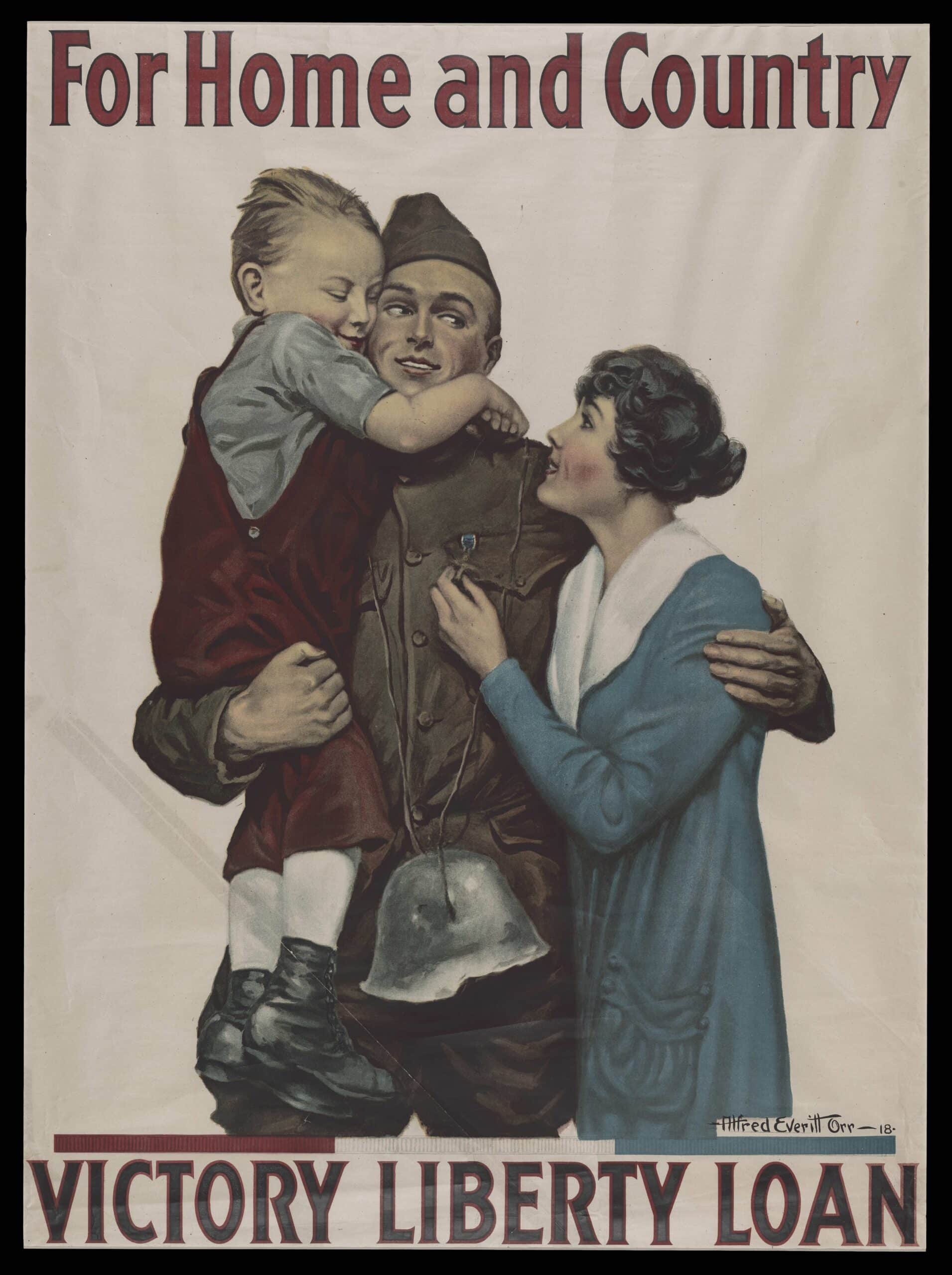The First World War is the “great catastrophe” which sired so many later disasters of the 20th and 21st centuries: the Russian Revolution, the rise of Fascism, Nazism, and WWII, and the sectarian conflicts that continue to roil the Balkans, Central Asia, and the Middle East. It was the first war to harness (to the business of killing) the technological inventions from the Industrial Revolution, including the machine gun, airplanes, submarines, tanks and poison gas. The statistics of the war’s mass slaughter are still shocking: over 9,000,000 combatants and 7,000,000 civilians perished.
This exhibition, curated by Harn Curator of Photography Carol McCusker and collector Robert C. Sanchez, focuses on the portrayal of WWI by artists and illustrators through posters and prints (from Sanchez’s collection) and postcards and items of popular culture from the collection of UF History Professor Geoffrey Giles. Also in the exhibition are the WWI personal effects of Russell Hull (grandfather of Gainesville’s Russell Etling) who survived the brutal Meuse-Argonne Offensive.
Although these objects are often exhibited in museums, much of this material was meant as ephemera—paper items of short-term usefulness never intended to be preserved. Posters (cheap, mass-produced, and easily displayed) were an ideal medium for governments to communicate with their citizens, to keep an optimistic investment in the war. They were instruments of persuasion that urged patriotism, enlistment, guilt and fear, and commanded citizens to “sign up,” “ration food” and “buy bonds.” The posters are from seven countries, covering with broad, common themes: The Homefront & Patriotism; Demonizing the Enemy; Money for War; Combat & Ruin; and Protest. Within each, visitors can identify national symbols, religious iconography, racial and ethnic stereotypes and classical motifs. Each country pressed their artists into service, and, despite varying artistic styles, countries on both sides of the conflict used art to provoke the same human emotions: love of country, pride in duty and degradation of the enemy.
The exhibition also highlights the role of women and suffragettes, and African and African-American soldiers during this unprecedented global conflagration.
In any modern government, but particularly a democracy, the relationships between advertising, government information, truth and propaganda are hard to define. Indeed, in times of war, these relationships can become opaque. The recent controversies surrounding social media and political elections suggest that discerning fact from fiction and friend from foe remains a perennial challenge for all citizens.



